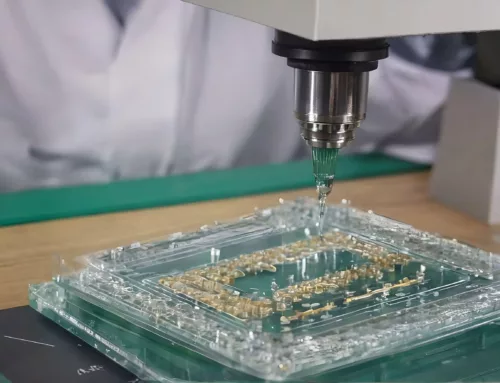hundred_percent_height=”no” min_height_medium=”” min_height_small=”” min_height=”” hundred_percent_height_scroll=”no” align_content=”stretch” flex_align_items=”flex-start” flex_justify_content=”flex-start” flex_column_spacing=”” hundred_percent_height_center_content=”yes” equal_height_columns=”no” container_tag=”div” menu_anchor=”” hide_on_mobile=”small-visibility,medium-visibility,large-visibility” status=”published” publish_date=”” class=”” id=”” spacing_medium=”” margin_top_medium=”” margin_bottom_medium=”” spacing_small=”” margin_top_small=”” margin_bottom_small=”” margin_top=”” margin_bottom=”” padding_dimensions_medium=”” padding_top_medium=”” padding_right_medium=”” padding_bottom_medium=”” padding_left_medium=”” padding_dimensions_small=”” padding_top_small=”” padding_right_small=”” padding_bottom_small=”” padding_left_small=”” padding_top=”” padding_right=”” padding_bottom=”” padding_left=”” link_color=”” link_hover_color=”” border_sizes=”” border_sizes_top=”” border_sizes_right=”” border_sizes_bottom=”” border_sizes_left=”” border_color=”” border_style=”solid” box_shadow=”no” box_shadow_vertical=”” box_shadow_horizontal=”” box_shadow_blur=”0″ box_shadow_spread=”0″ box_shadow_color=”” box_shadow_style=”” z_index=”” overflow=”” gradient_start_color=”” gradient_end_color=”” gradient_start_position=”0″ gradient_end_position=”100″ gradient_type=”linear” radial_direction=”center center” linear_angle=”180″ background_color=”” background_image=”” skip_lazy_load=”” background_position=”center center” background_repeat=”no-repeat” fade=”no” background_parallax=”none” enable_mobile=”no” parallax_speed=”0.3″ background_blend_mode=”none” video_mp4=”” video_webm=”” video_ogv=”” video_url=”” video_aspect_ratio=”16:9″ video_loop=”yes” video_mute=”yes” video_preview_image=”” render_logics=”” absolute=”off” absolute_devices=”small,medium,large” sticky=”off” sticky_devices=”small-visibility,medium-visibility,large-visibility” sticky_background_color=”” sticky_height=”” sticky_offset=”” sticky_transition_offset=”0″ scroll_offset=”0″ animation_type=”” animation_direction=”left” animation_speed=”0.3″ animation_offset=”” filter_hue=”0″ filter_saturation=”100″ filter_brightness=”100″ filter_contrast=”100″ filter_invert=”0″ filter_sepia=”0″ filter_opacity=”100″ filter_blur=”0″ filter_hue_hover=”0″ filter_saturation_hover=”100″ filter_brightness_hover=”100″ filter_contrast_hover=”100″ filter_invert_hover=”0″ filter_sepia_hover=”0″ filter_opacity_hover=”100″ filter_blur_hover=”0″]
Lubricants go back to medieval times when animal grease was used on the axel mounts of the cart and other machinery of that era, the idea behind it is to lessen direct metal to metal contact by utilizing the grease as a smooth fluid layer between the materials reducing material stresses and friction. Technology has come a long way since then and present-day lubrication plays a key role in mechanical machinery operations.

All liquids will provide some form of lubrication however naturally some perform better than others. Modern-day lubricants are developed specifically for particular material types and to perform in varying environments and load-bearings. The majority of lubricants are 90% base oil and about 10% additives.
Additives
These additives give lubricants their specific properties such as modifiers to reduce friction, anti-foaming agents, extreme pressure additives, extreme temperature resistance, additives that regulate viscosity, and corrosion inhibition additives to name but a few. Additives, therefore, prolong mechanical system life spans and help it operate more efficiently, for example by reducing downtime of a plants machinery and reducing wear and tear of industrial machinery and related gasoline or diesel engines which saves money that can be spent on more research and development which moves the industry advancements.
On the flip side, the wrong lubricant or additive could also cause irreversible damage or seizure to a plant’s mechanical systems and or shorten its life span.
Additives are chemical compounds that are added to the base oil, consisting mostly of either petroleum or synthetic-based oils. The additives give the base oil enhanced properties as for diesel engines, an example, is soot, diesel engines produce a lot of soot and anti-clumping agents help reduce clumping of the carbon particulates in the combustion chamber and reduce emissions.
Delft Solids Solutions offers insight into a court case
Therefore we could suggest that proper additives play a key role in our industries and this was made evident when Delft Solids Solutions was requested to investigate a case to find out which additive in the lubricant being used had possibly caused damage to a number of pistons of a ship’s diesel marine engine.
Delft Solids Solutions was asked to find out to what extent an oil additive had caused caking of combusted and un-combusted particles that are seen in fig 1 on the piston head/ crown. Which is the surface area that comes into contact with the gaseous mixture before combustion. The piston crown also takes on the bulk of the pressures, the extreme heat, and other stresses of the expanding gasses before and after the ongoing combustion cycles. To get closer and understanding of what could have possibly caused the crown caking, we used several techniques and specialized equipment for our analysis.
Scanning Electron Microscope (SEM) to show morphology and contract, and an X-ray microanalysis to determine the composition of the solid caking on the piston crown, less than 80 elements in total were detected and analyzed. As you can see during combustion there are many interactions with heated particles all having their specific effects.

Fig. 1, Shown above in the three photographs are the areas where specific micro pieces of matter were selected for SEM

Fig. 2, Shown above are morphological aspects of the deposit with obvious contrast differences.
Table 1.
Quantitative normalized summary of the elements found in the sample with SEM-EDX investigation.
| Element name | Symbol | Element concentration |
| wt.% | ||
| Oxygen | O | 40 |
| Calcium | Ca | 24 |
| Carbon | C | 15 |
| Sulfur | S | 10 |
| Zinc | Zn | 6 |
| Phosphorous | P | 5 |
| Total | 100 |
It can be observed from our analysis data concentrations in Table 1, expressed in weight % that other than the obvious oxygen which is needed in all combustion engines we found compounds that are present in most fuel and oil additives such as calcium, carbon, sulfur, zinc and phosphorous which when chemically altered help prevent or lower oxidative breakdown of the oil and that also have anti-wear properties. This data was useful in showing the client that the deposits must have originated from the additives in the motor oil used, but does not confirm that they are the possible cause of the piston caking; More testing would be needed to draw a conclusion.
What we can do for you?
Delft solids solutions gives peace of mind by focusing on the particles, their interactions, and behavior while in use or storage. In a diverse number of different industries, we can give our clients insights on how to improve sustainability and create solutions to innovation problems that are related to particles and their interactions with different mediums during chemical or mechanical processes.
It can be observed from our analysis data concentrations in Table 1, expressed in weight % that other than the obvious oxygen which is needed in all combustion engines we found compounds that are present in most fuel and oil additives such as calcium, carbon, sulfur, zinc and phosphorous which when chemically altered help prevent or lower oxidative breakdown of the oil and that also have anti-wear properties. This data was useful in showing the client that the deposits must have originated from the additives in the motor oil used, but does not confirm that they are the possible cause of the piston caking; More testing would be needed to draw a conclusion.
What we can do for you?
Delft solids solutions gives peace of mind by focusing on the particles, their interactions, and behavior while in use or storage. In a diverse number of different industries, we can give our clients insights on how to improve sustainability and create solutions to innovation problems that are related to particles and their interactions with different mediums during chemical or mechanical processes.
Lubricants go back to medieval times when animal grease was used on the axel mounts of the cart and other machinery of that era, the idea behind it is to lessen direct metal to metal contact by utilizing the grease as a smooth fluid layer between the materials reducing material stresses and friction. Technology has come a long way since then and present-day lubrication plays a key role in mechanical machinery operations.

All liquids will provide some form of lubrication however naturally some perform better than others. Modern-day lubricants are developed specifically for particular material types and to perform in varying environments and load-bearings. The majority of lubricants are 90% base oil and about 10% additives.
Additives
These additives give lubricants their specific properties such as modifiers to reduce friction, anti-foaming agents, extreme pressure additives, extreme temperature resistance, additives that regulate viscosity, and corrosion inhibition additives to name but a few. Additives, therefore, prolong mechanical system life spans and help it operate more efficiently, for example by reducing downtime of a plants machinery and reducing wear and tear of industrial machinery and related gasoline or diesel engines which saves money that can be spent on more research and development which moves the industry advancements.
On the flip side, the wrong lubricant or additive could also cause irreversible damage or seizure to a plant’s mechanical systems and or shorten its life span.
Additives are chemical compounds that are added to the base oil, consisting mostly of either petroleum or synthetic-based oils. The additives give the base oil enhanced properties as for diesel engines, an example, is soot, diesel engines produce a lot of soot and anti-clumping agents help reduce clumping of the carbon particulates in the combustion chamber and reduce emissions.
Delft Solids Solutions offers insight into a court case
Therefore we could suggest that proper additives play a key role in our industries and this was made evident when Delft Solids Solutions was requested to investigate a case to find out which additive in the lubricant being used had possibly caused damage to a number of pistons of a ship’s diesel marine engine.
Delft Solids Solutions was asked to find out to what extent an oil additive had caused caking of combusted and un-combusted particles that are seen in fig 1 on the piston head/ crown. Which is the surface area that comes into contact with the gaseous mixture before combustion. The piston crown also takes on the bulk of the pressures, the extreme heat, and other stresses of the expanding gasses before and after the ongoing combustion cycles. To get closer and understanding of what could have possibly caused the crown caking, we used several techniques and specialized equipment for our analysis.
Scanning Electron Microscope (SEM) to show morphology and contract, and an X-ray microanalysis to determine the composition of the solid caking on the piston crown, less than 80 elements in total were detected and analyzed. As you can see during combustion there are many interactions with heated particles all having their specific effects.

Fig. 1, Shown above in the three photographs are the areas where specific micro pieces of matter were selected for SEM

Fig. 2, Shown above are morphological aspects of the deposit with obvious contrast differences.
Table 1.
Quantitative normalized summary of the elements found in the sample with SEM-EDX investigation.
| Element name | Symbol | Element concentration |
| wt.% | ||
| Oxygen | O | 40 |
| Calcium | Ca | 24 |
| Carbon | C | 15 |
| Sulfur | S | 10 |
| Zinc | Zn | 6 |
| Phosphorous | P | 5 |
| Total | 100 |
It can be observed from our analysis data concentrations in Table 1, expressed in weight % that other than the obvious oxygen which is needed in all combustion engines we found compounds that are present in most fuel and oil additives such as calcium, carbon, sulfur, zinc and phosphorous which when chemically altered help prevent or lower oxidative breakdown of the oil and that also have anti-wear properties. This data was useful in showing the client that the deposits must have originated from the additives in the motor oil used, but does not confirm that they are the possible cause of the piston caking; More testing would be needed to draw a conclusion.
What we can do for you?
Delft solids solutions gives peace of mind by focusing on the particles, their interactions, and behavior while in use or storage. In a diverse number of different industries, we can give our clients insights on how to improve sustainability and create solutions to innovation problems that are related to particles and their interactions with different mediums during chemical or mechanical processes.
It can be observed from our analysis data concentrations in Table 1, expressed in weight % that other than the obvious oxygen which is needed in all combustion engines we found compounds that are present in most fuel and oil additives such as calcium, carbon, sulfur, zinc and phosphorous which when chemically altered help prevent or lower oxidative breakdown of the oil and that also have anti-wear properties. This data was useful in showing the client that the deposits must have originated from the additives in the motor oil used, but does not confirm that they are the possible cause of the piston caking; More testing would be needed to draw a conclusion.
What we can do for you?
Delft solids solutions gives peace of mind by focusing on the particles, their interactions, and behavior while in use or storage. In a diverse number of different industries, we can give our clients insights on how to improve sustainability and create solutions to innovation problems that are related to particles and their interactions with different mediums during chemical or mechanical processes.
Lubricants go back to medieval times when animal grease was used on the axel mounts of the cart and other machinery of that era, the idea behind it is to lessen direct metal to metal contact by utilizing the grease as a smooth fluid layer between the materials reducing material stresses and friction. Technology has come a long way since then and present-day lubrication plays a key role in mechanical machinery operations.

All liquids will provide some form of lubrication however naturally some perform better than others. Modern-day lubricants are developed specifically for particular material types and to perform in varying environments and load-bearings. The majority of lubricants are 90% base oil and about 10% additives.
Additives
These additives give lubricants their specific properties such as modifiers to reduce friction, anti-foaming agents, extreme pressure additives, extreme temperature resistance, additives that regulate viscosity, and corrosion inhibition additives to name but a few. Additives, therefore, prolong mechanical system life spans and help it operate more efficiently, for example by reducing downtime of a plants machinery and reducing wear and tear of industrial machinery and related gasoline or diesel engines which saves money that can be spent on more research and development which moves the industry advancements.
On the flip side, the wrong lubricant or additive could also cause irreversible damage or seizure to a plant’s mechanical systems and or shorten its life span.
Additives are chemical compounds that are added to the base oil, consisting mostly of either petroleum or synthetic-based oils. The additives give the base oil enhanced properties as for diesel engines, an example, is soot, diesel engines produce a lot of soot and anti-clumping agents help reduce clumping of the carbon particulates in the combustion chamber and reduce emissions.
Delft Solids Solutions offers insight into a court case
Therefore we could suggest that proper additives play a key role in our industries and this was made evident when Delft Solids Solutions was requested to investigate a case to find out which additive in the lubricant being used had possibly caused damage to a number of pistons of a ship’s diesel marine engine.
Delft Solids Solutions was asked to find out to what extent an oil additive had caused caking of combusted and un-combusted particles that are seen in fig 1 on the piston head/ crown. Which is the surface area that comes into contact with the gaseous mixture before combustion. The piston crown also takes on the bulk of the pressures, the extreme heat, and other stresses of the expanding gasses before and after the ongoing combustion cycles. To get closer and understanding of what could have possibly caused the crown caking, we used several techniques and specialized equipment for our analysis.
Scanning Electron Microscope (SEM) to show morphology and contract, and an X-ray microanalysis to determine the composition of the solid caking on the piston crown, less than 80 elements in total were detected and analyzed. As you can see during combustion there are many interactions with heated particles all having their specific effects.

Fig. 1, Shown above in the three photographs are the areas where specific micro pieces of matter were selected for SEM

Fig. 2, Shown above are morphological aspects of the deposit with obvious contrast differences.
Table 1.
Quantitative normalized summary of the elements found in the sample with SEM-EDX investigation.
| Element name | Symbol | Element concentration |
| wt.% | ||
| Oxygen | O | 40 |
| Calcium | Ca | 24 |
| Carbon | C | 15 |
| Sulfur | S | 10 |
| Zinc | Zn | 6 |
| Phosphorous | P | 5 |
| Total | 100 |
It can be observed from our analysis data concentrations in Table 1, expressed in weight % that other than the obvious oxygen which is needed in all combustion engines we found compounds that are present in most fuel and oil additives such as calcium, carbon, sulfur, zinc and phosphorous which when chemically altered help prevent or lower oxidative breakdown of the oil and that also have anti-wear properties. This data was useful in showing the client that the deposits must have originated from the additives in the motor oil used, but does not confirm that they are the possible cause of the piston caking; More testing would be needed to draw a conclusion.
What we can do for you?
Delft solids solutions gives peace of mind by focusing on the particles, their interactions, and behavior while in use or storage. In a diverse number of different industries, we can give our clients insights on how to improve sustainability and create solutions to innovation problems that are related to particles and their interactions with different mediums during chemical or mechanical processes.
It can be observed from our analysis data concentrations in Table 1, expressed in weight % that other than the obvious oxygen which is needed in all combustion engines we found compounds that are present in most fuel and oil additives such as calcium, carbon, sulfur, zinc and phosphorous which when chemically altered help prevent or lower oxidative breakdown of the oil and that also have anti-wear properties. This data was useful in showing the client that the deposits must have originated from the additives in the motor oil used, but does not confirm that they are the possible cause of the piston caking; More testing would be needed to draw a conclusion.
What we can do for you?
Delft solids solutions gives peace of mind by focusing on the particles, their interactions, and behavior while in use or storage. In a diverse number of different industries, we can give our clients insights on how to improve sustainability and create solutions to innovation problems that are related to particles and their interactions with different mediums during chemical or mechanical processes.





